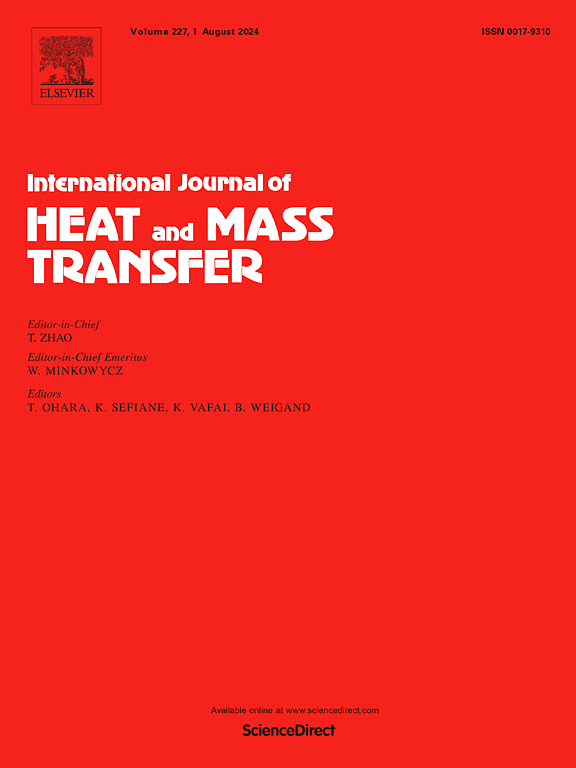热诱导变形表面的沸腾增强
IF 5
2区 工程技术
Q1 ENGINEERING, MECHANICAL
International Journal of Heat and Mass Transfer
Pub Date : 2024-10-29
DOI:10.1016/j.ijheatmasstransfer.2024.126358
引用次数: 0
摘要
通过在沸腾表面添加微结构来增强沸腾传热是一种有效而简单的方法。然而,传统的传热表面在加工成型后无法改变其几何结构,只能在特定的传热条件下具有良好的传热特性。形状记忆合金具有较宽的转变温度范围和优异的机械性能,有望实现自适应增强传热。本研究以 HFE-7100 为工作流体,研究了不同结构的形状记忆合金表面的池沸腾传热性能。实验结果表明,弧形微结构具有更多的活化成核点,有利于沸腾初期气泡的产生,但在沸腾后期会阻碍气泡脱离和液体补充。相比之下,直立微结构的成核沸腾(ONB)出现较晚,存在 "沸腾延迟 "现象,但在沸腾后期具有较高的传热系数(HTCs)和临界热通量(CHF)。然而,可变形微结构表面(DMS)可以自适应地调整其微结构,以满足不同沸腾阶段的传热要求。因此,与抛光表面(PS)相比,DMS 的 CHF 和 HTC 最高,分别提高了 98.58 % 和 104.88 %。本文章由计算机程序翻译,如有差异,请以英文原文为准。
Boiling enhancement on the thermally induced deformation surfaces
Enhancing boiling heat transfer by adding microstructures to boiling surfaces is an effective and simple method. However, traditional heat transfer surfaces cannot change their geometric structure after processing and forming and can only have good heat transfer characteristics under certain heat transfer conditions. Shape memory alloys exhibit a wide range of transformation temperatures and superior mechanical properties, which are expected to achieve adaptively enhanced heat transfer. In this study, the pool boiling heat transfer performance of surfaces with different structures made of shape memory alloys using HFE-7100 as the working fluid has been studied. The experimental results indicate that the curved microstructures have more activated nucleation sites, which are conducive to bubble generation in the early stage of boiling but prevent bubble detachment and liquid replenishment in the later stage of boiling. In contrast, the onset of nucleate boiling (ONB) of the upright microstructures appears later, and there is "boiling retardation", but it has higher heat transfer coefficients (HTCs) and the critical heat flux (CHF) in the later stage of boiling. However, the deformable microstructures surface (DMS) can adaptively adjust its microstructures to meet the heat transfer requirements at different boiling stages. Consequently, the DMS has the highest CHF and HTC, with maximum improvements of 98.58 % and 104.88 % compared to the polished surface (PS), respectively.
求助全文
通过发布文献求助,成功后即可免费获取论文全文。
去求助
来源期刊
CiteScore
10.30
自引率
13.50%
发文量
1319
审稿时长
41 days
期刊介绍:
International Journal of Heat and Mass Transfer is the vehicle for the exchange of basic ideas in heat and mass transfer between research workers and engineers throughout the world. It focuses on both analytical and experimental research, with an emphasis on contributions which increase the basic understanding of transfer processes and their application to engineering problems.
Topics include:
-New methods of measuring and/or correlating transport-property data
-Energy engineering
-Environmental applications of heat and/or mass transfer

 求助内容:
求助内容: 应助结果提醒方式:
应助结果提醒方式:


